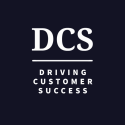Key steps to ensure Customer Success

Enterprise Times caught up with Geoff Pople, Chief Customer Officer at Kimble Applications, to talk about Kimble Connect, its virtual user conference held a few weeks ago. This is the second part of that interview and explores how Pople addresses customer success at Kimble in his new role. Customer success is critical for every SaaS vendor, and the conversation provided insights into how Kimble addresses the challenge. He explains how the PSA vendor is evolving its approach to customer success
On Customer Success

Enterprise Times asked Pople how customer success is evolving at Kimble?
“Customer Success has certainly been maturing at Kimble in terms of putting in process and being more consistent in the way we operate. We’ve worked quite hard over the last couple of years in giving our customer success managers a toolkit to help their engagement with their customers.
“We’ve been much better at capturing and then using that data. We use that data in a series of customer health dashboards. Those show several different pillars and help us drive the customer success managers’ behaviour and target the areas they really need to explore with their customers. The maturity of our customer success operation has been growing over the last couple of years.”
How do you segment the Kimble clients base?
“Segmenting our clients is important because it means we direct the right amount of customer success effort to the right place. In an unconstrained world, we would give every customer limitless Customer Success time; that’s not practical.
“We look at customers and segment based upon their relative size. How many users do they have? What’s the value of the subscription.
“Larger customers have got much more complex operating models; they’re multi-country. They tend to use a lot more features within the product and some of the more complex features. Obviously, they have more people using Kimble. They necessitate a higher degree of looking after than smaller customers, who are typically, not always, the reverse. Ultimately, that segmentation means that our customer success resource is apportioned appropriately according to that size and complexity across our customer base.”
On customer retention
What makes a client sticky, and how are you looking to improve that stickiness?
“For me, we boil that down to two key things; adoption and value. To what degree is the customer using the features offered by Kimble? And is the customer getting incremental value from their use of Kimble.
“By incremental value I mean, if we have a customer who’s in year four of a subscription, there’s no point in us resting on our laurels. We need to be seen to be continually delivering them value. Allowing them to do new things and optimising their performance.
“We track adoption levels within each customer by functional area, by delivery, resourcing and finance functions. We identify where Kimble is underused within a customer. Then we educate the customers on the benefits those underutilised features could bring. Then we put a plan in place to implement those things.
“On the back of that, we track and agree on the incremental value it brings to the customer. We create the cycle of identifying where there’s a lack of adoption. We drive that adoption. In driving that adoption, we agree with the customer – yes, that’s leading to incremental value, and that in itself should lead to stickiness.”
On churn
What are your early indicators of risk for customer churn?
“It’s a complex picture. Yes, there are indicators, as you say. We need to break that down into its constituent elements. There’s a number of things that we track. Relationships is one of them. That’s at an operational level, and an executive level, both of those are important.
“If we experience any silence or reluctance to agree to meetings, that tends to be a key indicator that something might be wrong within the account. When you see what had previously been strong, open relationships suddenly becoming more closed off.
“Adoption is another one. We track adoption. Is there a change in what is being used? Or what’s not being used? Has the customer’s appetite to expand the use of Kimble taken a dip?
“We look at support tickets and the sentiment on the support tickets. Are we detecting any pattern? Is there a peak in volume of any support tickets? Is there frustration that we’re detecting on any of those tickets? Then we also look at usage? What’s the volume of users logging in and the frequency of users not logging in?”
“We tracking health measurement on our customer dashboard. Anything that we see going a colour that we don’t like, anything other than green, we then say: What’s the issue? And what’s our plan to address this? That’s the reactive part to identifying churn risk. Ultimately we aim to avoid that. We try to avoid that by creating really strong, deep relationships with our customers, creating adoption plans, and creating value on the back of it, then fostering advocacy amongst customers.”
The Pandemic impact on customer success
What does success mean for Kimble clients pre, during and post-pandemic?
“During the pandemic, is the key thing for me. Ultimately, whether it’s pre or post, the goal is the same. Is Kimble facilitating the performance of the customers business? Are you getting value from its continued use?
“This time last year, April, May onwards, was a really interesting time for us. For many of our customers, it put a stronger focus on Kimble. People were in unknown and unpredictable times. It meant that you needed to get a much stronger lens on the future—things such as forecasts, like a sales pipeline, a revenue forecast, and your resource forecast.
“The disciplines weren’t as rigid. We saw customers really honing down on those things—trying to build their pipeline and forecast revenue and resourcing with more predictability and accuracy. Our customer success managers were being asked for more and more meetings from our customers to fine-tune what they had already been doing.
“Through that pandemic phase, it started to elevate Kimble from being more than just an operational tool to a strategic tool as well. It was really influencing the performance of the business. Once customers started doing that during the pandemic, they’ve continued those disciplines post-pandemic, which has hopefully cemented Kimble’s position within their organisation.”

Hakan Ozturk
Founder, theCScafe.com, #1 Weekly Customer Success Newsletter
Hakan Ozturk is a Paris-based Customer Success leader with over 15 years of experience in the computer software industry. Passionate about driving growth and delivering value to strategic customers, Hakan has established himself as a trusted industry expert. As the Founder of The Customer Success Café Newsletter and TopCSjobs.com, Hakan provides valuable industry insights and daily-updated job opportunities worldwide in the field of Customer Success. Connect with Hakan to boost your career in CS and your company’s potential for massive growth.

Leave a Reply